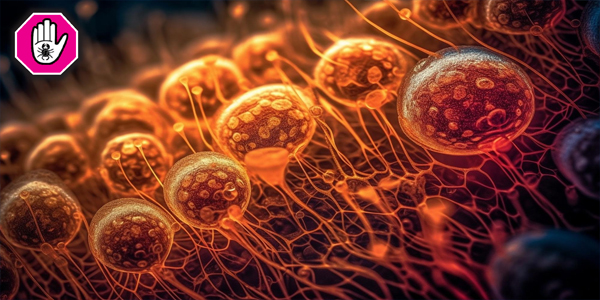Cancer treatment has evolved dramatically over the years, and radiation therapy stands out as one of the most effective and widely used methods for treating many types of cancer. Whether used alone or in combination with surgery and chemotherapy, radiation therapy plays a crucial role in destroying cancer cells, controlling tumor growth, and alleviating symptoms. In this blog, we’ll explore how radiation therapy works to treat cancer and the different types of radiation therapy available.
What Is Radiation Therapy?
Radiation therapy uses high-energy particles or waves, such as X-rays, gamma rays, or protons, to destroy or damage cancer cells. The main goal is to target and damage the DNA inside cancer cells, which stops them from multiplying and spreading throughout the body. While both healthy and cancerous cells can be affected by radiation, cancer cells are generally less capable of repairing themselves, making them more susceptible to this treatment.
How Does Radiation Therapy Work?
The treatment process involves directing controlled doses of radiation to the cancer cells. By damaging their DNA, cancer cells lose the ability to repair themselves and eventually die. Here’s a breakdown of the key steps in the radiation therapy process:
- Consultation and Planning:
- The process begins with a consultation where oncologists determine whether radiation therapy is the best course of action.
- Advanced imaging techniques, such as CT scans, MRIs, or PET scans, help precisely locate the tumor. Based on these images, a treatment plan is created to ensure that radiation is directed exactly where it’s needed.
- Delivery of Radiation:
- There are different methods of delivering radiation to cancer cells. The most common are:
- External Beam Radiation Therapy (EBRT): Radiation is delivered externally using a machine that directs beams at the tumor.
- Internal Radiation Therapy (Brachytherapy): Radioactive material is placed inside or near the tumor to target the cancer cells directly.
- Systemic Radiation Therapy: A radioactive substance is taken by mouth or injected into the bloodstream, targeting cancer cells throughout the body.
- There are different methods of delivering radiation to cancer cells. The most common are:
- Fractionation:
- Radiation is usually administered in small, carefully measured doses over several sessions (called fractions). This approach maximizes damage to cancer cells while giving healthy cells time to recover between treatments.
- Precision Targeting:
- Modern radiation therapy is highly precise. Techniques like Intensity-Modulated Radiation Therapy (IMRT) and Image-Guided Radiation Therapy (IGRT) allow doctors to adjust the intensity and focus of radiation, minimizing exposure to healthy tissue. For small, localized tumors, stereotactic body radiation therapy (SBRT) is used to deliver extremely precise, high doses of radiation.
Types of Radiation Therapy
There are several forms of radiation therapy, each tailored to specific cancer types and stages. Here’s a table summarizing the key methods and their uses:
| Type of Radiation Therapy | How It Works | Uses | Advantages |
|---|---|---|---|
| External Beam Radiation Therapy (EBRT) | Radiation is directed at the tumor from outside the body using a machine like a linear accelerator. | Common for most solid tumors, including breast, prostate, and lung cancer. | Non-invasive, highly customizable. |
| Internal Radiation Therapy (Brachytherapy) | Radioactive sources are placed inside or near the tumor. | Often used for prostate, cervical, and breast cancer. | Delivers a high dose directly to the tumor with minimal impact on surrounding tissue. |
| Systemic Radiation Therapy | A radioactive substance is injected or swallowed, allowing it to travel through the bloodstream to target cancer. | Used for thyroid cancer (radioactive iodine) or bone metastases. | Treats cancer throughout the body, effective for cancers that have spread. |
| Stereotactic Body Radiation Therapy (SBRT) | A high dose of radiation is delivered in a few sessions to a small, precise area. | Used for small, localized tumors in the lungs, liver, or brain. | Very precise, spares healthy tissue, fewer treatment sessions. |
Side Effects of Radiation Therapy
Radiation therapy is generally well-tolerated, but it can have side effects due to its impact on healthy tissue near the treatment area. These side effects vary depending on the part of the body being treated, the dose of radiation, and the overall health of the patient. Common side effects include:
- Fatigue: Patients often feel tired, especially as treatment progresses.
- Skin Reactions: The skin in the treated area may become red, irritated, or dry.
- Localized Symptoms: Depending on the treatment area, radiation therapy can cause symptoms like difficulty swallowing (if targeting the throat), diarrhea (if targeting the abdomen), or urinary problems (if targeting the pelvic region).
- Long-Term Effects: There is a small risk of developing secondary cancers or fibrosis, although this risk is minimized with advanced technology.
Advances in Radiation Therapy
One of the most significant advancements in radiation therapy is the ability to target tumors with extreme precision. Technologies like IMRT, IGRT, and proton therapy allow for better targeting, higher doses to the tumor, and less damage to surrounding healthy tissue. These innovations not only increase the effectiveness of radiation therapy but also reduce side effects and improve the patient’s quality of life during and after treatment.
Conclusion
Radiation therapy is a powerful tool in the fight against cancer. It works by damaging the DNA of cancer cells, preventing them from multiplying and spreading. Thanks to advancements in imaging and targeting technologies, radiation therapy is more effective and precise than ever before, helping millions of people manage and overcome cancer. If you or a loved one is considering radiation therapy, understanding how it works can empower you to make informed decisions about your treatment options.


